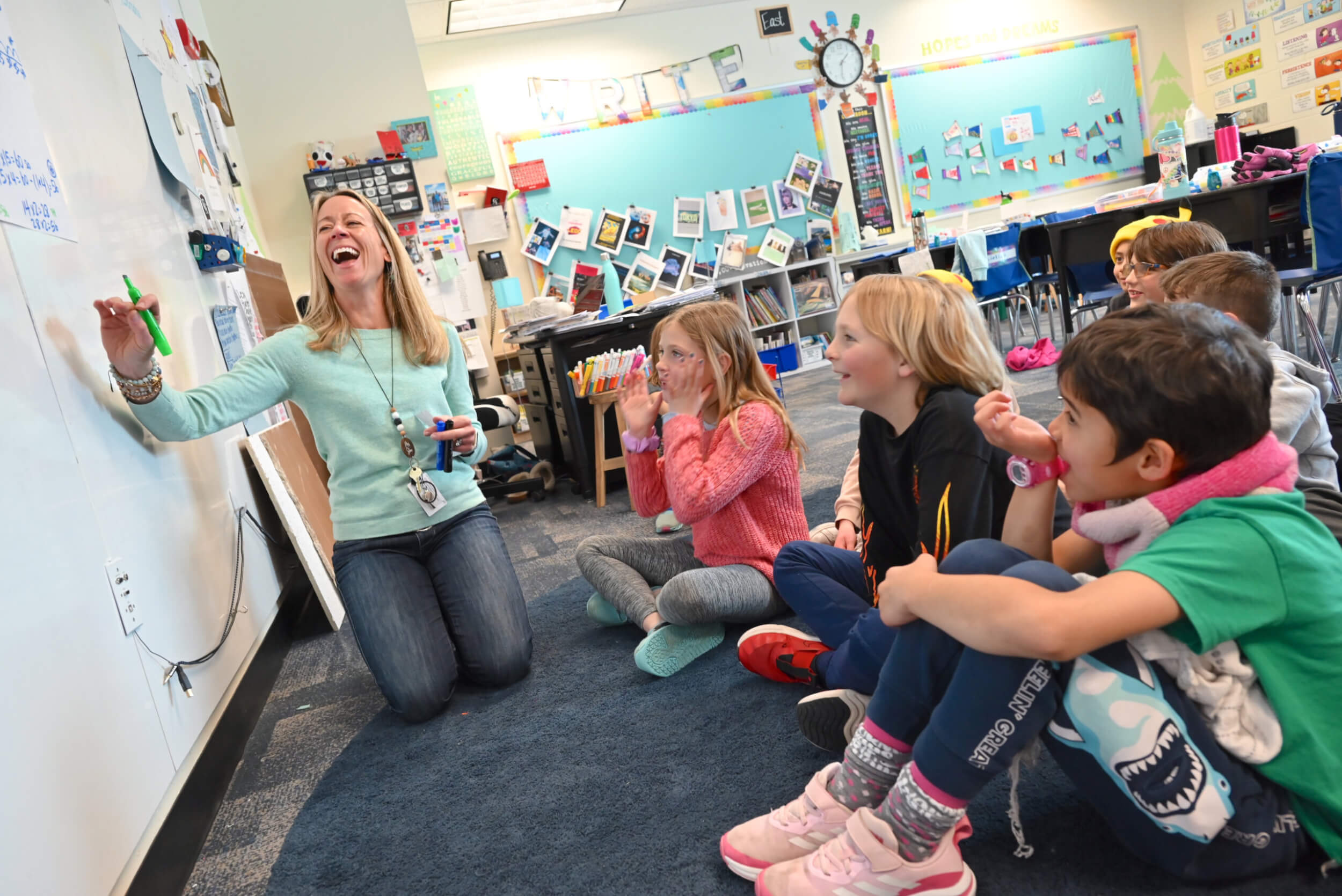When Jessica Ohly’s Fifth Graders screamed with delight, it was clear something good was happening. The students were sitting together in a ‘U’ in front of their classroom’s whiteboard, and Ohly had just begun to tell them a story about a field trip.
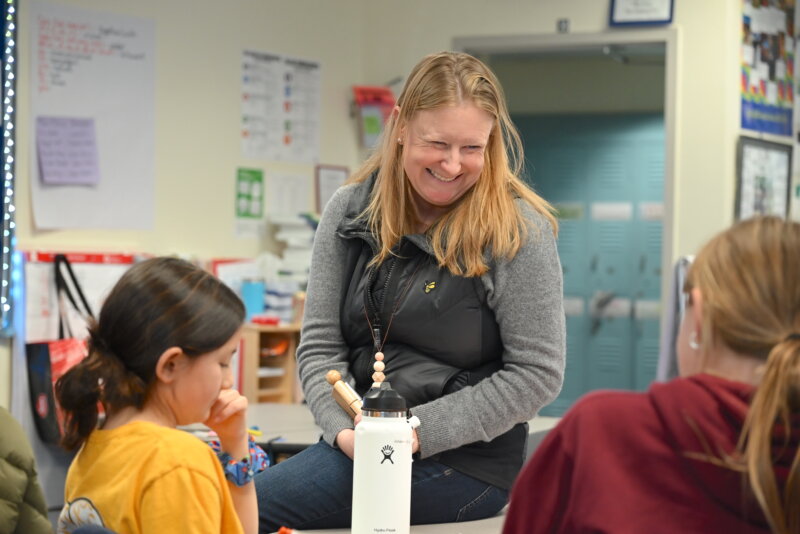
Nine groups of eight children and four groups of seven children are going to an amusement park, she recounted. Students need three to five tickets for each ride, and teachers can buy the tickets in strips of 10. “Would it be fair,” Ohly asked, “if teachers gave 336 tickets to the groups of eight and 294 tickets to the groups of seven?”
Hearing this setup, the Fifth Graders knew immediately that they’d be working on a “math poster”—hence the screams. Ohly’s students really love math posters. But the collaborative exercise isn’t just wildly popular; it is a microcosm of Colorado Academy’s Lower School math curriculum.
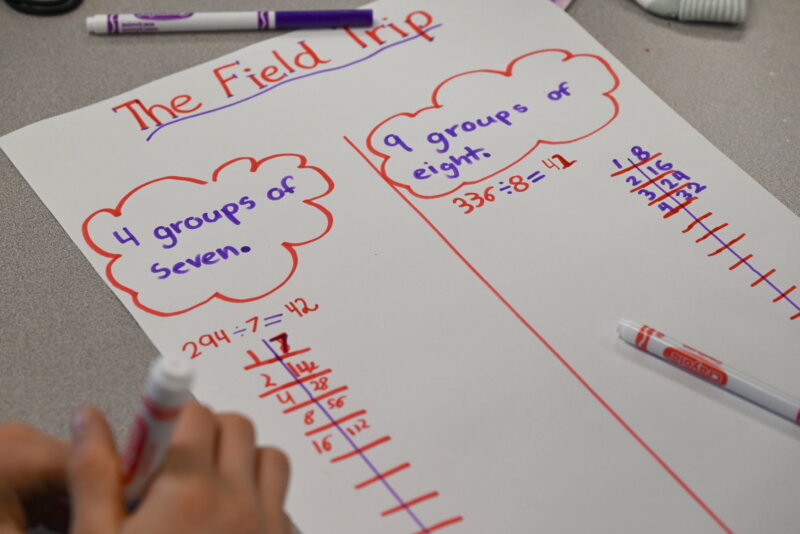
Drawn from the work of well-known math educator Cathy Fosnot, math posters are a method for putting learning in context, establishing a terrain that intrigues children and ignites their imagination. The contexts are situations children can imagine, which enable them to reflect on what they are doing.
Working in pairs, students use markers and poster-sized paper to illustrate their thought process about a central mathematical question, and then they share their thinking with the rest of the class through a gallery walk and what Fosnot terms a “Math Congress.” The teacher guides discussion about key mathematical concepts and strategies drawn from the students’ posters.
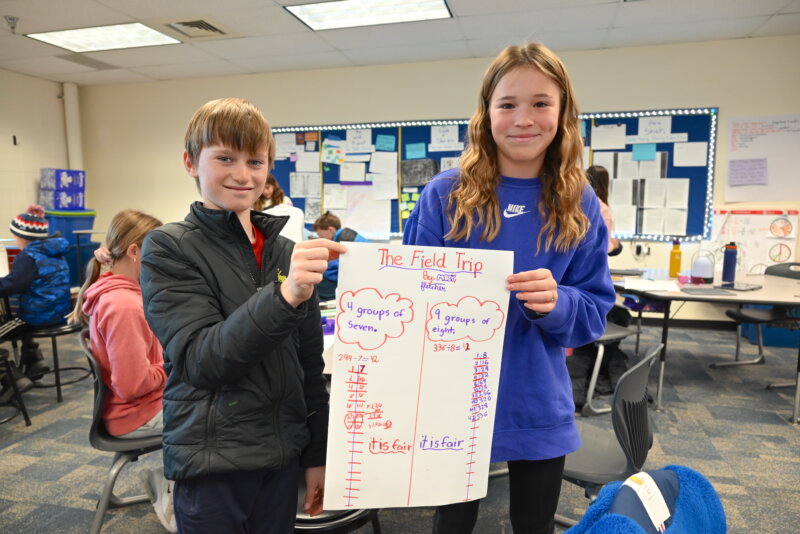
This approach, according to Ohly, comes with a host of benefits. Each student’s individual math toolkit is put to the test and ultimately grows through problem solving with a peer. The different paths students inevitably take to get to the same answer demonstrate that there are multiple ways to solve math problems and reward creativity. And, importantly, the classroom community comes together by elevating examples of their own thinking.
“In giving them a situation that draws them in, you’re really handing students something that they can engage with, helping them move into new areas,” she says. “What’s an efficient way of thinking about this question? What’s a clever way to answer it?”
Math posters, Ohly continues, are not about just getting to the right answer. They’re about developing flexible mathematical thinking and being able to communicate the problem-solving process to others. “We need to set the stage for children to understand that creativity matters in math. Being able to explain your thinking and support your ideas is far more important than memorizing an algorithm.”
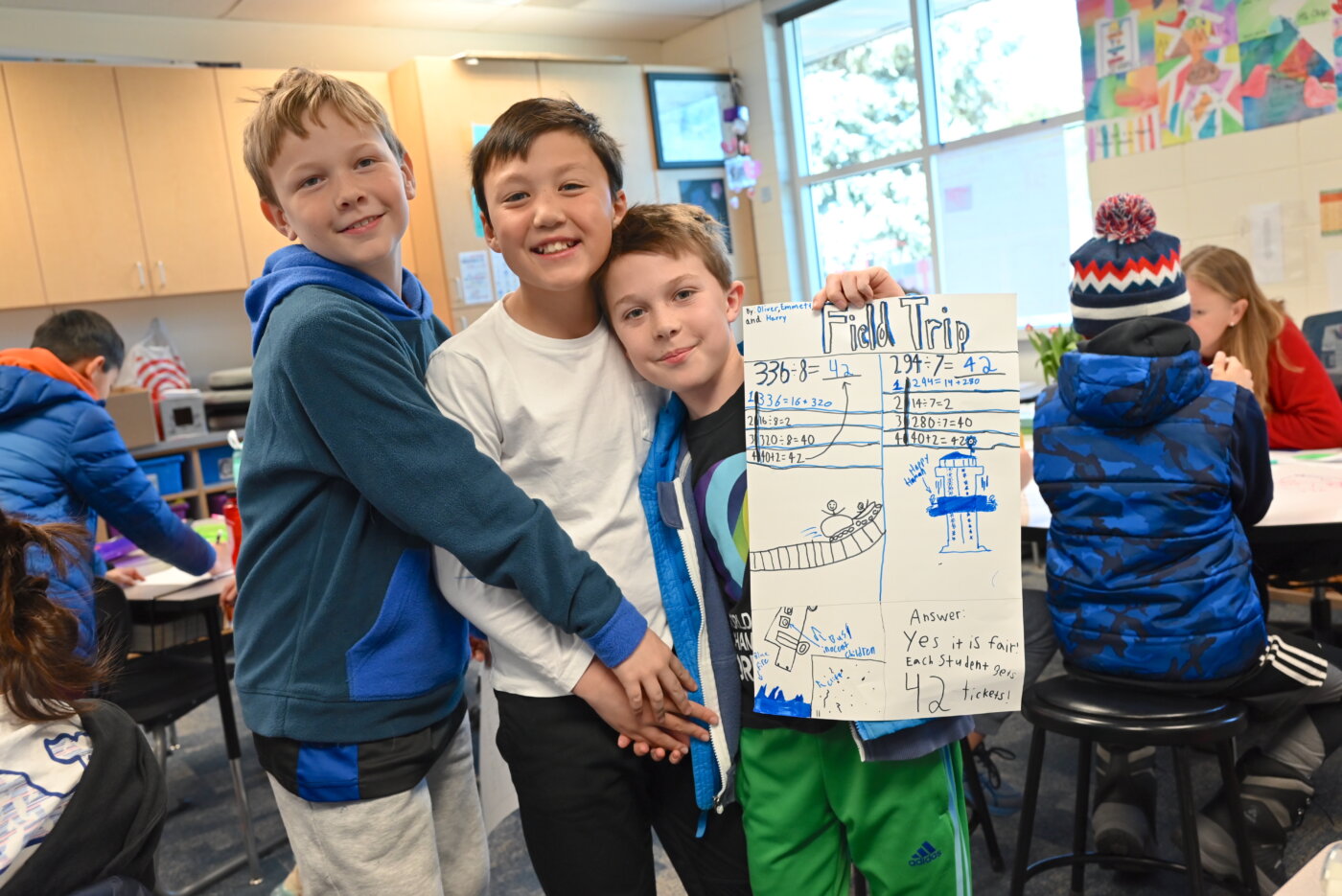
For the Fifth Grade students, the appeal of the math posters is straightforward.
“You can really show what you’re trying to do,” says Macy Greaves.
Fletcher Kott explains, “It’s a really cool way to figure stuff out.”
“I really like showing my thinking,” adds Jullianne Moon.
“A lot of kids come into Fifth Grade with stories in their head about whether they’re a ‘math person’ or not,” Ohly observes. “That’s something we want to change—not just in Fifth Grade, but throughout the whole Lower School. We want children to embrace the identity of a mathematician and feel empowered to figure things out.”
Number sense
The work of empowering students in math starts early at CA. In veteran teacher Diana Giarusso’s First Grade classroom, all children regularly hear themselves called mathematicians, despite the vast range of abilities and skills they bring with them from Kindergarten.
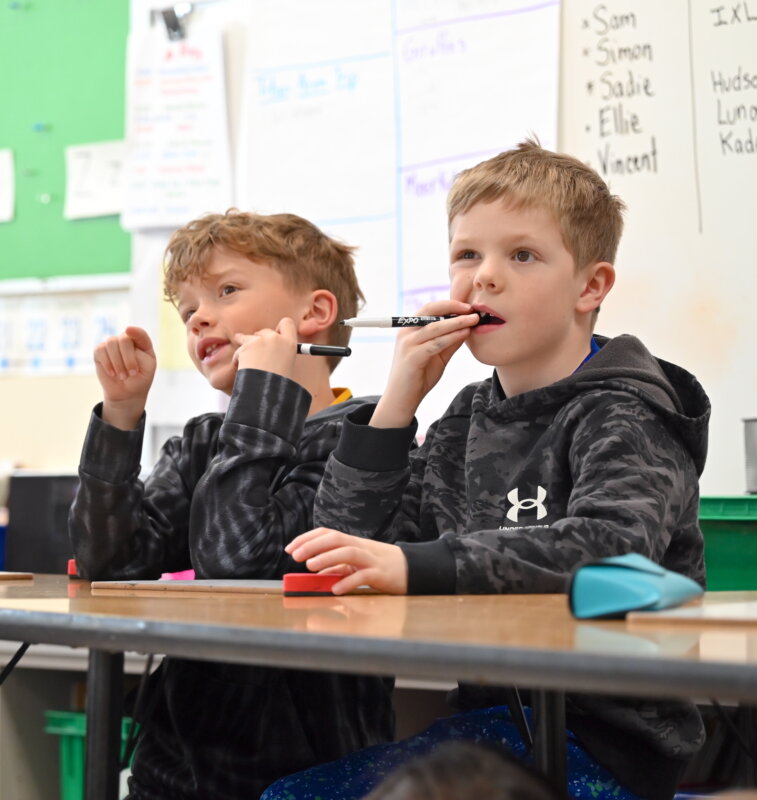
“We treat it the same as reading,” Giarusso explains. “Children learn math in different ways and at different rates. Just because I have two very different students—one of whom already knows their math facts to 10 and the other who’s still working on them—doesn’t mean that both of them can’t be future engineers or pursue something else where math is critical.”
Just as in Fifth Grade, the central focus in Giarusso’s classroom isn’t memorization, algorithms, or even equations. Instead, it’s the development of “number sense,” now widely understood as the foundation for success in math. Number sense is the ability to comprehend and connect numbers; strong number sense allows children to think about numbers flexibly and fluently.
Giarusso elaborates, “Number sense doesn’t mean calculation, or even learning to count. It’s making the connection between the words ‘one,’ ‘five,’ and ‘ten’ and the actual quantities they represent. It’s concepts like equivalency, and being able to determine when one number is more or less than another. It’s understanding that contained within the quantity of 10 are two groups of five, groups of six and four, and so on.”
Only after children have developed solid number sense—through card games, visualizations, estimation challenges, and manipulatives such as interlocking blocks—do Giarusso and her First Grade colleagues move on to practice with math symbols and expressions. To nurture fluency with these, Lower School teachers use “number strings,” sequences of related but progressively more complex mathematical expressions.
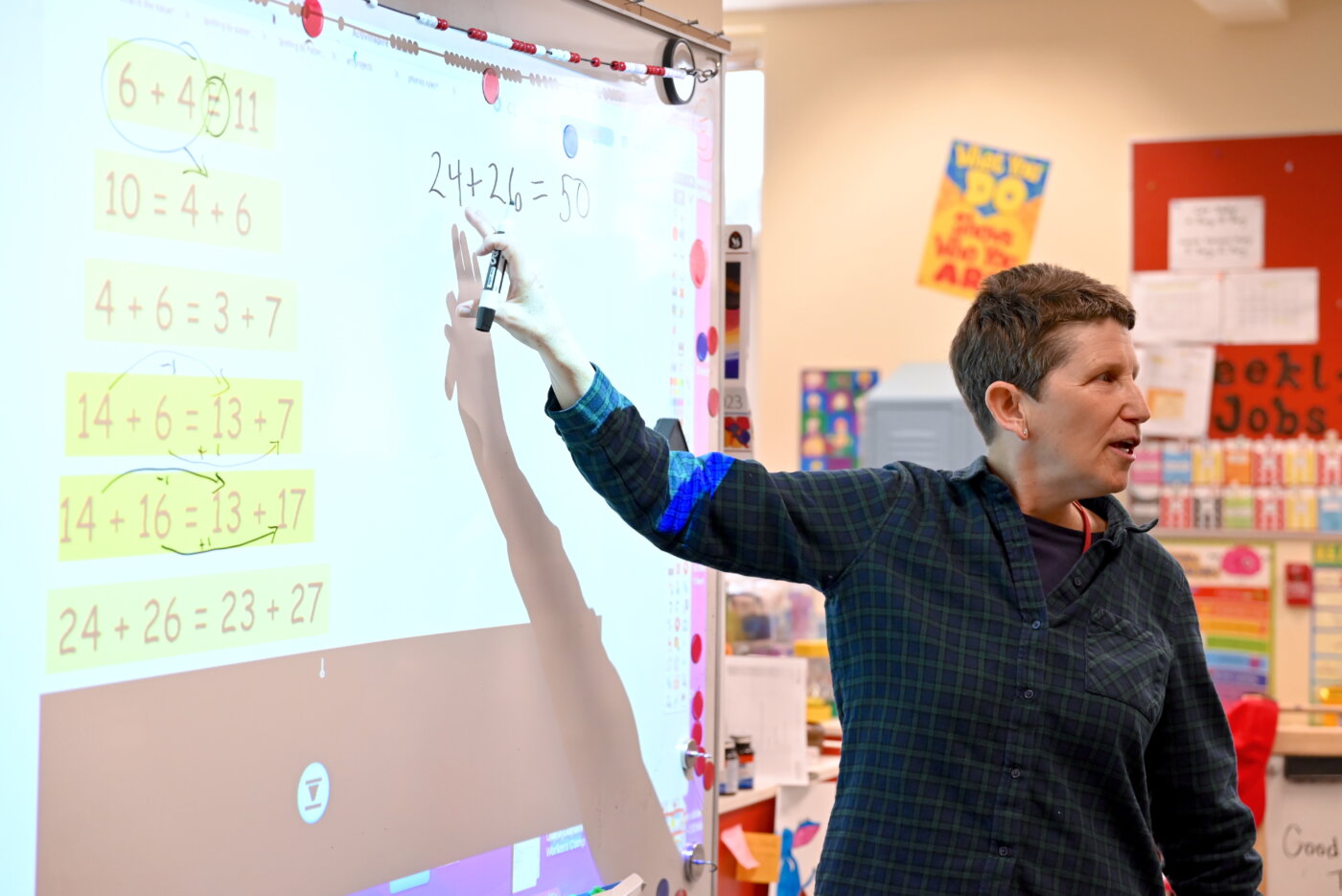
Like math posters, number strings encourage children to explore multiple ways to solve problems as they gain confidence using mathematical operations. Working as a class, students try different strategies to determine the answers, building on their understanding of numbers to move toward mental math proficiency.
The act of talking about math is central to the learning that’s happening through these kinds of exercises, says Giarusso.
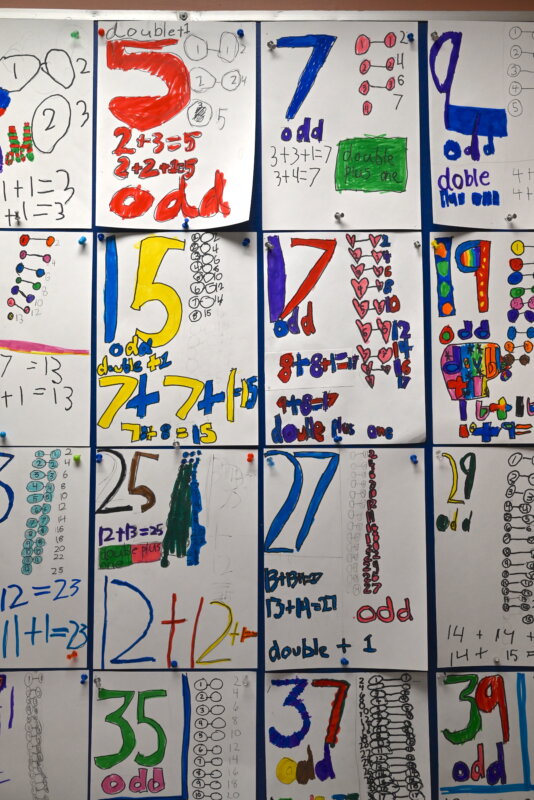
“Being able to articulate what they’re thinking is oftentimes the hardest thing for First Graders to do. But it is one of the most important. Explaining their mathematical reasoning deepens their understanding of the underlying concepts and sets the stage for later success in math, where showing their work will be essential.”
“Math is more than just the numbers on the page,” Giarusso continues. It is flexibility, grit, and organization, she says. Even handwriting plays a part. “A child’s ability to record their thinking, to make their problem-solving clear to someone else, is one of those foundational skills that shows up throughout their entire school career.”
Math is also beautiful, argues Giarusso. “I’ll tell my students that math is like art. Attaching that kind of language to math helps them see that it’s more than just black and white or right and wrong.”
Math investigations
Like their First Grade peers, Stephanie Stone’s Third Graders love digging into math “investigations,” rich problem-solving opportunities that go beyond the algorithm. These not only advance number fluency, but also inspire confidence that will be vital as students continue with math throughout their education.
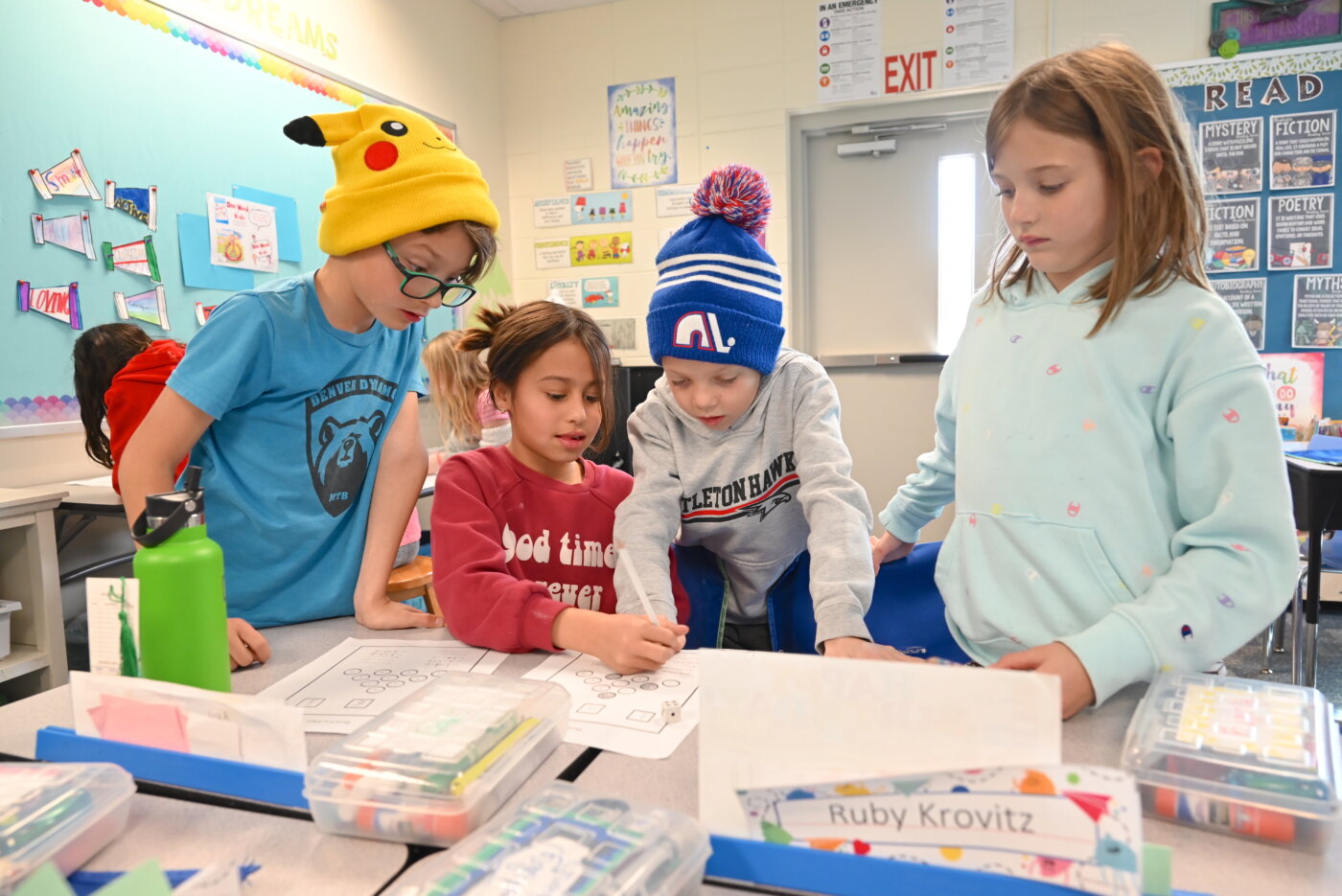
As the spine of the Lower School math curriculum, explains Stone, investigations draw on seminal math education concepts developed by TERC—an independent, research-based nonprofit focusing on STEM education—and supported by the National Science Foundation. The rigorous, activity-based challenges encourage students to think creatively, develop their own problem-solving strategies, and work cooperatively through writing, drawing, and talking about math.
“In Third Grade we dive right into multiplication,” Stone says, “and in a lot of the work that we do, students often don’t know right away when they get the correct answer. That levels the playing field—investigations are designed to give every child an entry point into the math, regardless of ability. Those who really have a solid understanding of the concepts can take it to a more meaningful and complex place, while learners who are still at that basic level can also feel successful.”
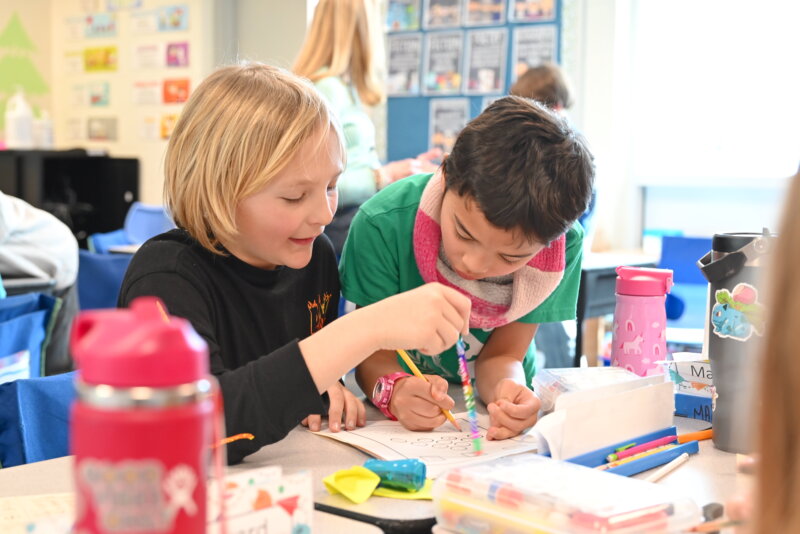
Hands-on, student-directed games figure heavily among math investigations. In “Bowl-a-Fact,” learners roll three dice and try to use the results in an equation that will produce one of the numbers between one and ten (the ten pins in bowling). Some students play the game using all four operations—addition, subtraction, multiplication, and division—while others use fewer to achieve the same ends.
This approach, where everyone can win, is described as “low threshold, high ceiling” teaching—a notion originated by the influential Stanford University math educator and author Jo Boaler, who proposed that math anxiety arises when children get the message that the purpose of math class is demonstrating that they can quickly find the right answer. Instead, Boaler argued, math learning should celebrate mistakes, struggle, and open-endedness, replacing the model of mathematician as speedy calculator with the idea of math as exploration.
“We never want a child to be put in a position where they have no idea how to start or tackle a problem,” says Stone. “We focus on teaching students to consider different strategies, to represent math problems visually and creatively, and to value sharing ideas with their classmates.”
And, Stone insists, the focus is always firmly on developing a “growth mindset,” encouraging children to see challenge as the path to learning. “We highlight self-reflection as a way for students to understand that, for example, maybe subtraction is hard for them, but they’ve added a number of strategies to their toolkit for solving subtraction problems, and they should celebrate that accomplishment.”
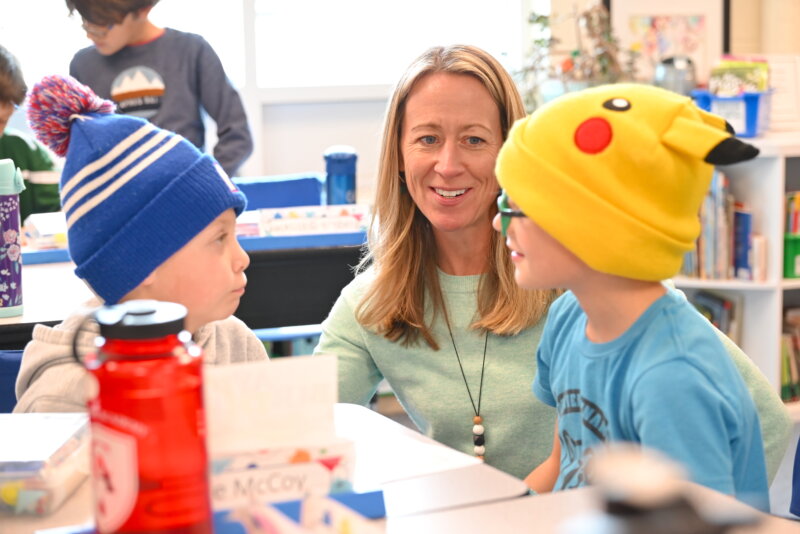
Stone continues, “I struggled to learn math. I don’t remember learning why, when you multiply fractions, you have to change the denominators. I just remember learning procedures.”
But on Pi Day (March 14), Stone realized how different math is today—and how lucky her students are.
“One of them was wearing a Pi Day t-shirt, so we watched a video and talked about how mathematicians figured out 3.14159… My students are building understanding and making conjectures, feeling happy and confident about math. They even think it’s fun, and that’s so important at this age.”
A learning community
That energy and joy are much like the excitement that fills Ohly’s classroom when math posters are taking shape—or when it’s time to work on writing, or gather for book clubs, or dive into social studies topics like racism. And no matter whether the subject is math or language arts, that engagement, she says, stems from the intentional community the students have created for themselves.
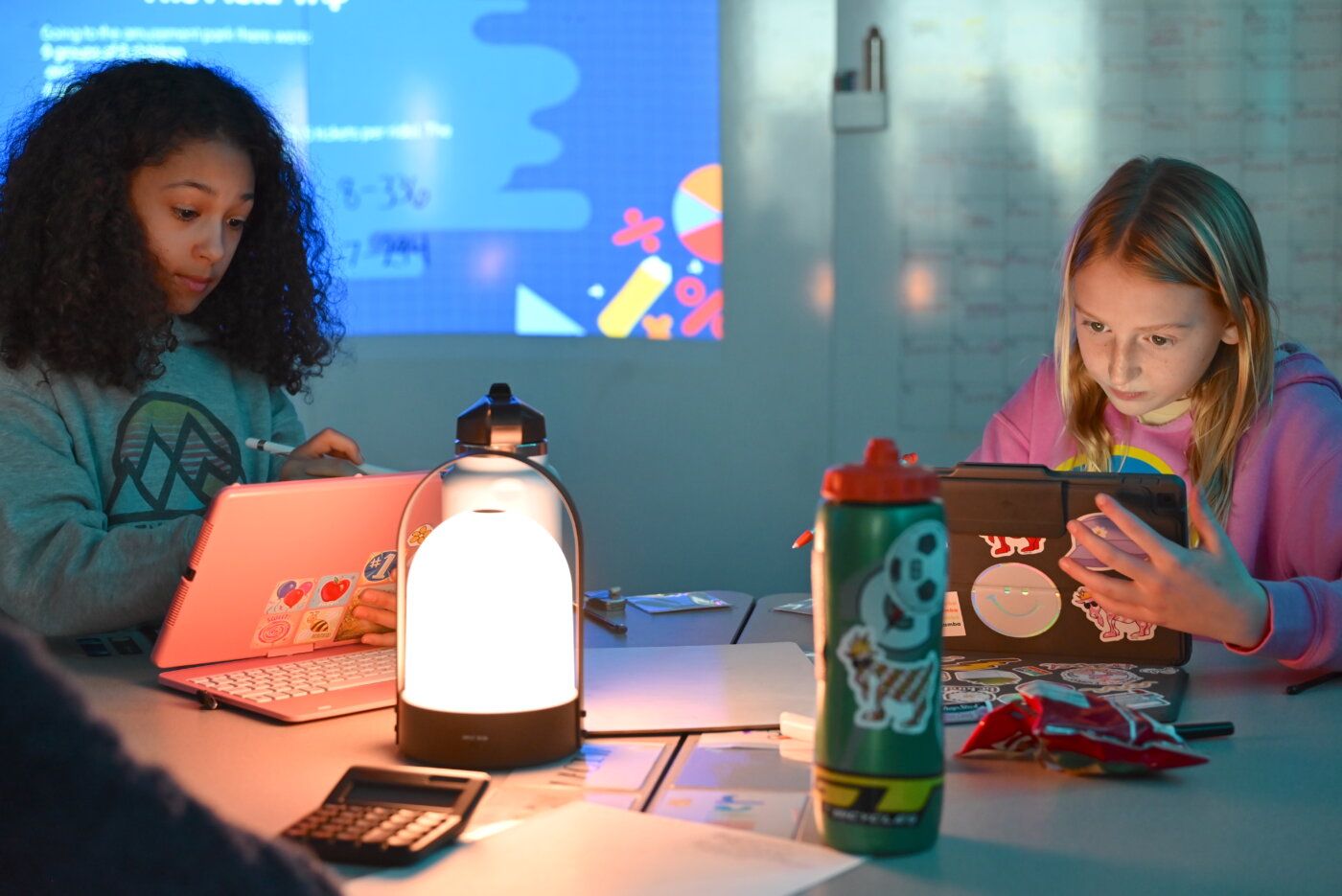
“We all understand that this is a place where we can make mistakes, we can try things out, we can experiment, we can change our minds—and always know that we will be supported.”
At the beginning of the school year, her students worked together to develop a list of commitments to guide them as mathematicians. Included are pledges to “take chances and accept our mistakes,” “be willing to step out of our comfort zone,” and “collaborate and help others.”
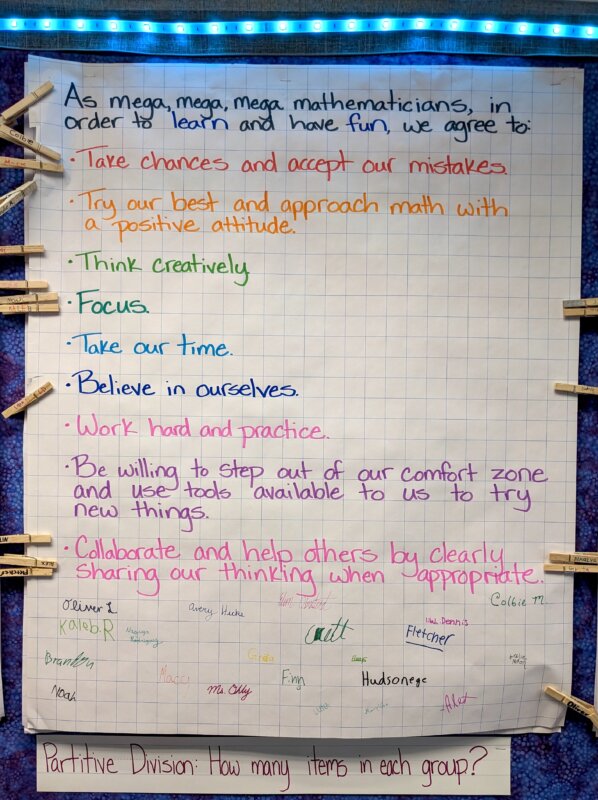
These are all parts of the mindset that Ohly and her Lower School colleagues nurture each day. “Above everything else,” she says, “we are teaching for understanding, and we are teaching for attitude. So often, speed is seen as the marker of success in math. But we encourage our students to put in the time, challenge themselves, and dig into ideas with their peers.”
By giving students rich opportunities to explore and grow, Ohly says, they can drive their own learning. “When my class is really humming, they almost don’t need me. I’ll be hunkered down on the floor supporting two kids, while all the others are just going. It doesn’t matter whether it’s a research task or a math poster—my students are curious and engaged. They’re thinkers.”
Ohly sets the same high expectations for all of her Fifth Graders—an approach that leads to success. Counting on each child to access and dig into an assignment, explains Ohly, and asking them to use clear rubrics to evaluate their own work are powerful components in the process. “When you believe in kids and you put that out there, they learn to believe in themselves.”
